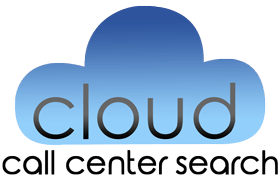Technology to Support Remote Call Center Agents

The old adage holds true: Necessity is the mother of invention.
With growing concern over COVID-19, also known as Coronavirus, many organizations have been forced to consider alternative operational configurations to safeguard both their employees and the integrity of their services.
With global uncertainty likely to increase, call center leaders will be tasked with the same exercise — discovering creative solutions amidst an ever-changing medical dilemma.
The Centers for Disease Control and Prevention (CDC) currently recommends social distancing and limiting close contact with others as a main precaution to prevent the spread of the illness.
Luckily, call centers are uniquely equipped for pain-free migration to at-home models with technology built to support remote contact centers.
The Benefits of an At-Home Call Center Model
Regardless if you’re compelled to consider an at-home model due to emerging medical concerns or business-related circumstances, there are many worthwhile advantages.
Better redundancy
Thanks to the proliferation of digital connectivity, including cloud-based collaboration and process tools, at-home agent models offer high redundancy rates, which would be nearly impossible to replicate across a traditional brick-and-mortar model without breaking the bank.
A distributed team of remote agents allows for scalable failover and outage contingencies that go well beyond what’s possible from a single, localized contact center operation.
Greater talent pool
By expanding your reach beyond your corporate address, you’ll be opening the door to a community of qualified agents across secondary and tertiary locales that you would otherwise miss.
Leveraging remote agents will also allow you to optimize for other organizational priorities, offering you more flexibility beyond a proximity-fixed marketplace. Business leaders can use remote agents to:
-
-
- Lower costs
- Maximize time-zone coverage
- Reduce environmental impact
- Give skilled individuals with disabilities or work limitations access to greater professional opportunities.
-
Remote ready
Most organizations are probably close to at-home ready right now without even knowing it. The increase in digital transformation has created cloud-supported work processes across every major industry, not just contact centers.
Distributed collaboration and workflows that connect sales, marketing and IT have become the norm, not the exception, and the majority of your in-house technology vendors already feature remote capabilities that can stand up quickly.
Bypass potential contact center issues
COVID-19 is top of mind for every business professional managing a shared workspace. More and more measures are being taken to self-contain and avoid unnecessary contact, including school closures, event cancellations, and remote work designations. Obviously, a contact center, featuring potentially hundreds of agents in close proximity, is a prime location for viral exposure.
Granting agents at-home work access allows contact centers to avoid issues that would otherwise disrupt regular work integrity. By leveraging the at-home model, common occurrences like sudden child illnesses, commuter issues, or daycare disruptions don’t have to endanger the quality of your services or your agent’s ability to work.
Technology to Consider to Support At-Home Agents
Even if you’re not running an at-home model, your technology vendors are likely ready to support remote agents as needed.
The challenge of getting an at-home model off the ground is really not a challenge at all. Here are some key technology workarounds that are likely already available to you.
Training & Onboarding
Call center leaders that traditionally manage in-person teams will want sophisticated ways to monitor the training and progress of all remote agents, as well as systems designed to track agent comprehension during virtual onboarding.
The vast majority of call center learning management systems (LMS) already have these capacites built in, with KPI and engagement metrics used to give contact center leaders full visibility into their agents’ ongoing learning.
Performance Monitoring
Leaders seeking to transition to an at-home model will need digitally-equipped processes to automate interventions and celebrate successes.
Gamification is already widely used in remote environments to extend notoriety to top-performing agents by providing virtual “pats on the back.” Conversely, gamification platforms can also highlight struggling agents in a sympathetic manner that will aid correction without hampering agent morale.
How Does Gamification Benefit Remote Call Centers?
Internal Communication & Collaboration
Keeping teams aligned is a fundamental strength of working face-to-face. But, whether your team cohesion rests on daily standups or end-of-day meetings, contact centers have replicated these collaborative experiences with communication tools that scale.
From chat messaging platforms to video conferencing tools, the connectivity gap between remote workers is constantly narrowing. To ensure that agent bonding continues, consider integrating with tools that make remote work feel connected and team-oriented.
Security & Compliance
Historically, if contact centers chose to leverage remote agents, they had to lean on network admins to carry a heavy lift of getting security compliance in place. But today, with Desktop as a Service (DaaS) vendors in high demand, those same contact centers are easily leveraging cloud-based technology to pre-configure and implement security measures to agents all around the world.
This means incredible security scalability can be achieved even across at-home models, with the added benefit of built-in data analytics most DaaS vendors offer for deeper insights into agent performance.
I Want to Know More About Remote Security & Compliance
Noise cancelation
Sure, controlling noise volumes is easier from a shared agent workspace, but call center technology has essentially made “noise risk” equivalent to boogeyman anxiety. There’s just no reason to worry about noise with your remote agents.
With two main noise technologies – Reference-based noise reduction (RNR), which removes ambient noise such as microphone feedback; and profile-based noise reduction (PNR), which removes non-human disruptions such as police sirens – your agents are more likely to find a quiet location in their home than in a busy call center.
Cut All Background Noise — for Less Than a Cup of Coffee
Do You Have the Technology to Support At-Home Agents? Find Out!
Contact centers have already proven that at-home agents can deliver stable and scalable services remotely.
The question is whether your technology is ready to deploy remote agents across an at-home model that’s right for your organization.
Our industry experts are ready to answer any and all questions on how Coronavirus may threaten your call center redundancy. Let us help you:
- Understand the capabilities of your current tech stack.
- Find technology vendors that support remote agent models.
- Safeguard the integrity and service of your contact center for any contingency
Contact Cloud Call Center Search for your free, no-risk consultation today.




